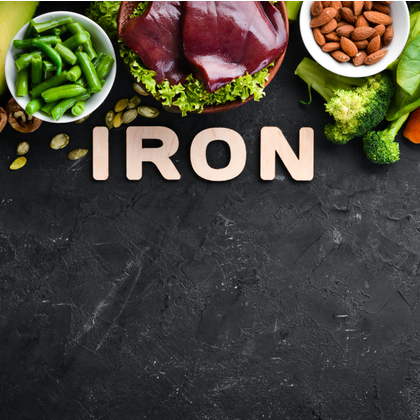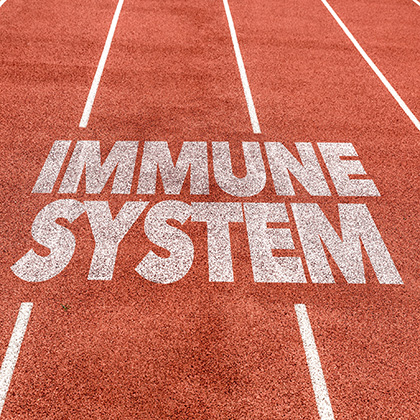
Whether you’re new to multivitamins or you’ve been taking them for years, one of the things you’ll probably check when you buy a new pack is the list of nutrients they contain. Not all multivitamin and mineral supplements contain the same ingredients, after all, so it’s important to choose a product that has all the nutrients you’re looking for (many don’t contain iron, for instance – for more information, see our guide to Multivitamins & Iron).
The truth is you’re highly unlikely to find such a product. That’s because some nutrients cannot be included in a multivitamin at a 100 per cent level. Take calcium, for instance – if you included the entire 100 per cent of your daily requirement, it would make the supplement too large to swallow. There’s also a danger with certain nutrients that you could end up getting too much of them, perhaps even a harmful amount.
Water-soluble vs fat-soluble
The human body absorbs different vitamins in different ways. Some vitamins dissolve in water – these are, unsurprisingly, called water-soluble vitamins and include:
-
Vitamin B1 (thiamin)
-
Vitamin B2 (riboflavin)
-
Niacin
-
Pantothenic acid
-
Vitamin B12 (cobalamin)
-
Folate (folic acid)
-
Biotin
-
Vitamin C
Because these nutrients dissolve in water, it means they are absorbed easily into your tissues and are used by the body fairly quickly. If you ingest more of any water-soluble vitamin than you need, the excess is simply excreted in your urine. That means your body is unlikely to store high levels of any water-soluble vitamins. However it also means you need a constant intake of water-soluble vitamins through the foods you eat and by taking supplements when necessary.
Meanwhile other vitamins dissolve in fats and oils (fat-soluble):
-
Vitamin A
-
Beta-carotene
-
Vitamin D
-
Vitamin E
-
Vitamin K
These are absorbed by fats (lipids) circulating in your blood such as cholesterol and fatty acids, and transported around the body in your bloodstream. But unlike water-soluble vitamins, any excess you ingest isn’t excreted. Instead, amounts of fat-soluble vitamins that your body doesn’t use are stored in the liver or fatty tissue to be used later. If, however, you take far too much of some of these vitamins (notably vitamins A, D and E) over a long time, it could result in potentially harmful side effects (i).
This doesn’t mean that you should avoid taking a multivitamin that contains 100 per cent of your requirement of fat soluble vitamins such as vitamin A, D and E. It does, however, suggest you may want to avoid products that offer amounts of these vitamins that are higher than those considered to be safe (see Safe upper levels, below).
Nutrient reference values (NRVs)
In the UK, recommended amounts or daily requirements of vitamins and minerals are currently measured as nutrient reference values (NRVs). These values have been set by the EU for 13 vitamins and 14 minerals, and are the daily amounts of those vitamins and minerals the average healthy person needs to prevent deficiency (ii).
NRVs for these vitamins and minerals are as follows:
| Vitamin A | 800 micrograms (µg) |
| Beta-carotene | 7mg |
| Vitamin B1 (thiamin) | 1.1 milligrams (mg) |
| Vitamin B2 (riboflavin) | 1.4mg |
| Niacin | 16mg |
| Pantothenic acid | 6mg |
| Vitamin B6 (pyridoxine) | 1.4mg |
| Biotin | 50µg |
| Folate (folic acid) | 200µg |
| Vitamin B12 (cobalamin) | 2.5µg |
| Vitamin C | 80mg |
| Vitamin D | 5µg* |
| Vitamin E | 12mg |
| Vitamin K | 75µg |
| Calcium | 800mg |
| Chromium | 40µg |
| Copper | 1mg |
| Fluoride | 3.5mg |
| Iodine | 150µg |
| Iron | 14mg |
| Magnesium | 375mg |
| Manganese | 2mg |
| Molybdenum | 50µg |
| Phosphorus | 700mg |
| Potassium | 2000mg |
| Selenium | 55µg |
| Zinc | 10mg |
* The UK Department of Health recommends a daily intake of 10µg of vitamin D.
To find the percentage of the NRV value for each of the relevant ingredients in a multivitamin, check the label (for instance, if a multi contains 80mg vitamin C, it will state ‘%NRV 100’ on the label, meaning it contains 100 per cent of the NRV for vitamin C).
What are DVs?
On some supplement labels you may see %DV instead of %NRV. DV means daily amount, and it’s the US equivalent of NRV (though amounts vary slightly between the two sets of recommendations – for instance, the NRV for vitamin C is 80mg while the DV is 90mg).
Safe upper levels
It’s worth bearing in mind that NRVs are what the EU has determined are the amounts most people need of vitamins and minerals to prevent deficiency and deficiency-related diseases such as scurvy and rickets. Some NRVs, however, are thought to fall quite short of the amounts you need to achieve optimum health. This explains why you’ll find many multivitamin products providing some – but not all – nutrients at levels higher than their NRV.
Yet even water-soluble vitamins can be toxic if you take too much of them. This is why it’s important to make sure you don’t exceed the safe upper limit (SUL) of any nutrient or nutrients you take, especially if you take several supplements that contain one or more of the same vitamins or minerals.
SULs were set by the UK-based Expert Group on Vitamins and Minerals (EVM) in 2003 (iii). They are based on the estimated amount of a nutrient that can be taken daily over a lifetime without causing any health problems. SULs aren’t supposed to be interpreted as the amount you should have to promote general health, rather limits you should avoid exceeding.
The EVM didn’t have sufficient information to set SULs for all the 13 vitamins and 14 minerals. So it set guidance levels (GLs) for most – but not quite all – of the remaining ones. These offer an indication of levels of those nutrients that haven’t been known to cause any adverse health effects. And while they can be useful, they shouldn’t be confused with or used as SULs (as their name suggests, they are simply a guide).
SULs and GLs are as follows:
| Vitamin A | 1500µg (GL) |
| Beta-carotene | 7mg (SUL)* |
| Vitamin B1 (thiamin) | 100mg (GL) |
| Vitamin B2 (riboflavin) | 40mg (GL) |
| Niacin | 500mg (GL) ** |
| Pantothenic acid | 200mg (GL) |
| Vitamin B6 (pyridoxine) | 10mg (SUL) |
| Biotin | 900µg (GL) |
| Folate (folic acid) | 1000µg (GL) |
| Vitamin B12 (cobalamin) | 2000µg (GL) |
| Vitamin C | Not set |
| Vitamin D | 25µg (GL) |
| Vitamin E | 540mg (SUL) |
| Vitamin K | 1000µg (GL) |
| Calcium | 1500mg (GL) |
| Chromium | 10mg (GL) |
| Copper | 10mg (SUL) |
| Fluoride | Not set |
| Iodine | 500µg (GL) |
| Iron | 17mg (GL) |
| Magnesium | 400mg (GL) |
| Manganese | 4mg (GL) |
| Molybdenum | Not set |
| Phosphorus | 250mg (GL) |
| Potassium | 3700mg (GL) |
| Selenium | 350µg (SUL) |
| Zinc | 25mg (SUL) |
* Not applicable to smokers.
** Not applicable during pregnancy
Do you need a multi?
If you eat a really healthy, well-balanced diet and you don’t have any health issues that stop you absorbing nutrients from food effectively, you may not need a multivitamin as you should be getting everything you need from the food you eat. But despite your best efforts, you may not eat as healthily as you should from time to time – who does, after all? This is where taking a multivitamin can be really helpful, as it makes sure you don’t miss out on essential nutrients.
There are lots of other reasons why taking a multivitamin can be a good idea – if you have a specific health reason, for instance, or if you’re following a restricted diet or you’re very active. But which one should you choose?
There are many types of multivitamins available. Some of the most popular ones are basic, one-a-day products that contain a good range of vitamins and minerals at good levels.
Multivitamins also come in a range of different formulations designed for people of different ages and with different wellbeing or lifestyle concerns, including:
Multivitamins for the over 50s
As people get older their bodies develop different needs. For example multivitamins designed for people aged 50 and older often include higher levels of calcium and vitamin D, since older people are more likely to need these nutrients to strengthen their bones and prevent osteoporosis. It may also include higher levels of some B vitamins such as folic acid and B12, as B12 deficiency is thought to be more common in women aged around 60 (iv).
Multivitamins for women
Adult men and women need the same vitamins and minerals to support their health, but women have an increased need for some nutrients at certain life stages. When women are of reproductive age, for example, they may benefit from an additional intake of nutrients that help regulate the hormones involved in their menstrual cycle. They also need more daily iron than men and post-menopausal women. Women who experience heavy periods are particularly at higher risk of iron deficiency and may need extra iron from a supplement (v).
Multivitamins for pregnancy
Multivitamins developed for women who are trying to get pregnant, pregnant or breastfeeding aim to support their overall health as well as that of their babies. The most important nutrient in pregnancy multivitamin products is folic acid, which reduces the risk of central neural tube defects such as spina bifida in unborn babies (vi). Pregnancy multivitamins do not usually contain vitamin A, since large amounts of vitamin A can harm an unborn baby (pregnant women are also advised to avoid eating foods that contain a lot of vitamin A, including liver and liver products such as paté) (vii).
Multivitamins for active people
When you exercise your body naturally produces free radicals – chemicals that can damage cells and even your DNA. Your body produces antioxidants, compounds that help protect against the damaging effects of free radicals. But doing a lot of exercise can deplete your body’s own store of antioxidants. So if you’re very active, you may find it useful to take a specialised sports multivitamin with added antioxidants. Sports multivitamins also often include nutrients designed to provide energy, such as magnesium and B vitamins, as well as nutrients that support bone health such as vitamin D and calcium.
Multivitamins for hair health
Many multivitamins aim to support a specific health goal – heart health, joint health, eye health, immune health or weight loss, for example. Multivitamin and mineral supplements for hair health are also becoming popular. These usually contain a range of essential vitamins and minerals in significant amounts including the B vitamins and biotin, which may help keep hair healthy. If you’re concerned about hair loss, there’s more information in our articles on hair loss in women and hair loss in men.
Multivitamins for children
Multivitamins for children include levels of nutrients suitable for specific age groups. A good multivitamin for children should include all the important trace minerals and vitamins, including nutrients that are needed for normal growth and development such as vitamin A, the B vitamins, calcium and iron. Since many children have difficulties swallowing tablets, supplements manufacturers make chewable multivitamins – though some products may contain high levels of sugar (look for a tooth-friendly product, ideally one that contains sweetener instead of sugar).
Fizzy multivitamins
Children aren’t the only ones who may have difficulty swallowing tablets, which is why some manufacturers make fizzy multivitamin supplements. These dissolve easily in water to make a pleasant drink, while providing a range of vitamins and minerals. Some use sweeteners instead of sugar, making them kinder to your teeth. If you have raised blood pressure (or you’re trying to keep your blood pressure at a healthy level) you may also want to look for a dissolvable multivitamin that’s low in sodium.
For more information on a wide range of health and wellbeing issues, visit our pharmacy health library
References:
-
Hamishehkar H. et al., Vitamins, Are They Safe? Adv Pharm Bull. 2016 Dec;6(4):467-477.Available online: https://www.ncbi.nlm.nih.gov/pmc/articles/PMC5241405/
-
Available online: https://eur-lex.europa.eu/legal-content/EN/TXT/HTML/?uri=CELEX:32011R1169&from=EN#d1e715-18-1
-
Expert Group on Vitamins and Minerals. Safe Upper Levels for Vitamins and Minerals May 2003. Available online: https://cot.food.gov.uk/sites/default/files/vitmin2003.pdf
-
Available online: https://www.nhs.uk/conditions/vitamin-b12-or-folate-deficiency-anaemia/causes/
-
Available online: https://www.nhs.uk/conditions/vitamins-and-minerals/iron/
Related Posts
Disclaimer: The information presented by Nature's Best is for informational purposes only. It is based on scientific studies (human, animal, or in vitro), clinical experience, or traditional usage as cited in each article. The results reported may not necessarily occur in all individuals. Self-treatment is not recommended for life-threatening conditions that require medical treatment under a doctor's care. For many of the conditions discussed, treatment with prescription or over the counter medication is also available. Consult your doctor, practitioner, and/or pharmacist for any health problem and before using any supplements or before making any changes in prescribed medications.

Keri
Keri Filtness has worked in the Nutrition Industry for 19 years. She is regularly called upon for her professional comments on health and nutrition related news. Her opinions have been featured by BBC3, Prima, Vitality, The Mirror, Woman’s Own and Cycling Weekly, amongst others. She has also worked one to one with journalists, analysing their diets and health concerns and recommending changes and additions, where appropriate.
View More



